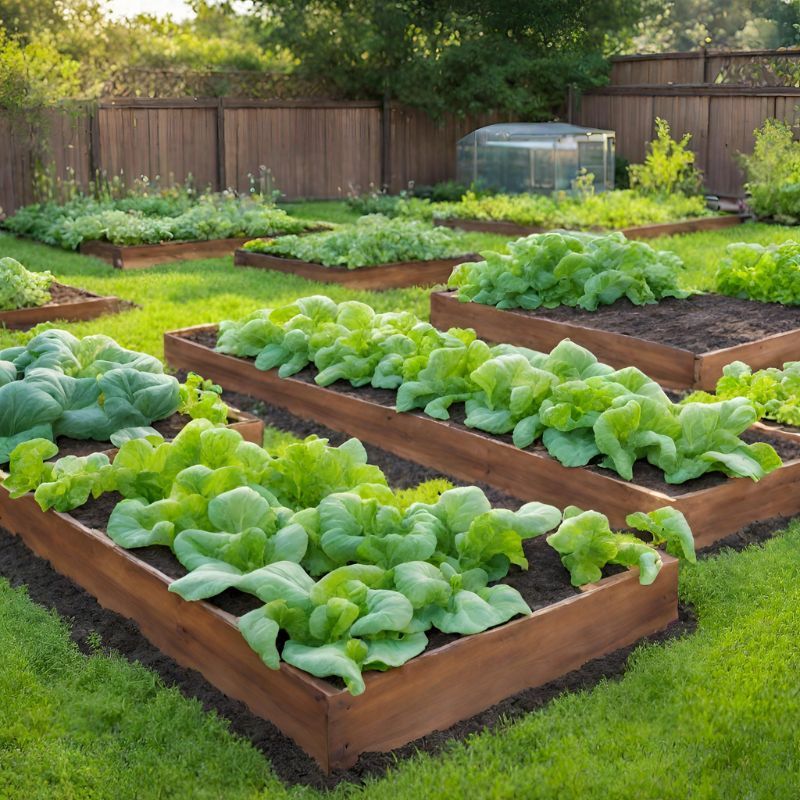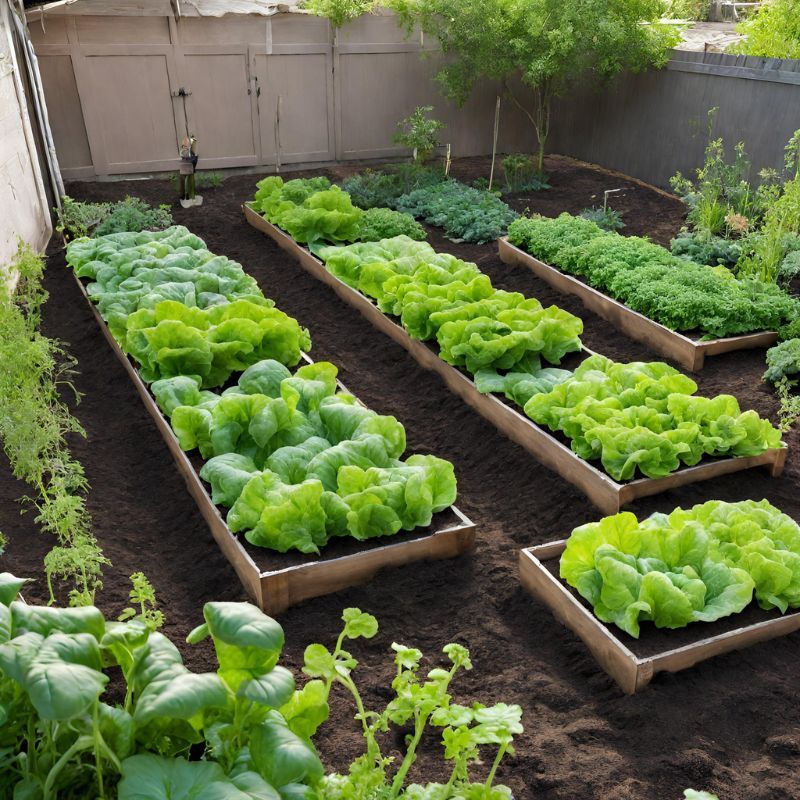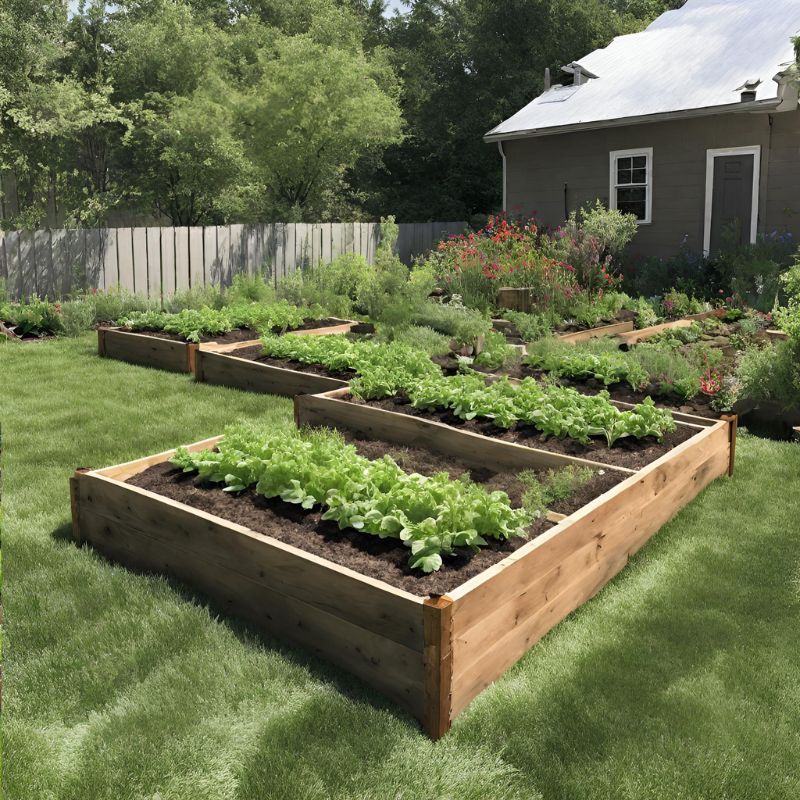
Imagine stepping into your garden and being greeted by lush, vibrant plants that thrive with minimal effort on your part. No-till lasagna gardening is not just a trend; it’s a sustainable revolution in the gardening world. This method is all about building a fertile, thriving garden from the ground up, quite literally, with layers of organic material that mimic the natural process of soil formation. It’s gardening that works with nature, not against it.
So, let’s dig into the ultimate guide to no-till lasagna gardening and discover how you can cultivate a flourishing garden that’s both eco-friendly and incredibly productive.
Key Takeaways
Lasagna gardening is a no-till, layer-based method that enriches the soil and reduces labor.
It involves alternating layers of carbon-rich and nitrogen-rich materials, which decompose to create fertile soil.
Starting a lasagna garden requires simple materials like cardboard, compost, and mulch, and can be done on any scale.
Maintenance is minimal, focusing on adding layers as needed and employing natural pest control.
This method supports a diverse range of plants and can lead to bountiful harvests with less watering and weeding.
Why No-Till Lasagna Gardening is Your Ultimate Growth Hack
Traditional gardening often involves tilling the soil, which can be back-breaking work and disrupt the natural ecosystem underground. Lasagna gardening, on the other hand, preserves the integrity of the soil and its inhabitants. By layering organic materials, you create a self-sustaining environment that encourages beneficial microbes and worms to do the hard work for you. This leads to better water retention, fewer weeds, and healthier plants.
Revolutionize Your Gardening with Layers Not Labor
With lasagna gardening, you’re building your garden from the top down. Each layer is carefully chosen to break down over time, providing your plants with all the nutrients they need. It’s like creating a compost pile right where you plant. And the best part? You can say goodbye to the heavy digging and tilling of traditional gardening methods.
Because of its simplicity and effectiveness, lasagna gardening is perfect for beginners and seasoned gardeners alike. Whether you’re looking to grow vegetables, herbs, or flowers, this method can be adapted to suit any gardening goal.
Unlocking Nature’s Secret for a Fertile Garden
The secret to a successful no-till lasagna garden lies in understanding how nature builds soil in the wild. In a forest, for example, leaves fall to the ground, creating a natural mulch that decomposes and feeds the soil. Lasagna gardening replicates this process, resulting in soil that’s rich in organic matter and teeming with life.
Most importantly, this method respects the delicate balance of the soil ecosystem. Instead of turning the soil and disrupting this balance, you’re adding to it, encouraging a thriving underground world that’s the foundation of any healthy garden.
Starting Your No-Till Lasagna Garden
Ready to start your own lasagna garden? The first step is surprisingly simple: gather your materials. You’ll need a good balance of ‘browns’ and ‘greens’ – that is, carbon-rich and nitrogen-rich materials. Here’s a quick rundown:
Gathering Your Materials: The Ingredients List
Cardboard or newspaper: These carbon-rich materials will form the base of your lasagna garden, smothering weeds and providing a canvas for your layers.
Compost: A crucial component that adds necessary microorganisms and nutrients to your layers.
Green waste: Such as grass clippings or vegetable scraps, which add nitrogen to help break down the carbon materials.
Brown waste: Like leaves, straw, or sawdust, to balance out the greens and add carbon.
Mulch: To top off your lasagna bed and keep moisture in while keeping weeds out.
With your materials in hand, you’re ready to choose the perfect spot for your garden.
Choosing the Perfect Spot: Location

Like any garden, your lasagna bed will thrive in a location that gets plenty of sunlight and has good drainage. Consider how much sun your chosen plants will need and observe your yard to find a spot that meets those requirements. Don’t worry about the condition of the soil; lasagna gardening will improve even the poorest soil conditions.
Laying the Base: The Cardboard Foundation
The foundation of your lasagna garden is as simple as laying down cardboard or thick layers of newspaper. This will block out light to the weeds and grass below, effectively smothering them. Wet the cardboard thoroughly to encourage decomposition and to help it conform to the ground. This is the first step in creating a fertile bed for your plants to thrive in.
Layering Your Lasagna: A Step-by-Step Guide
Now that you’ve got your spot and your base, it’s time to build your lasagna garden layer by layer. Think of it like making an actual lasagna – each layer has its purpose, and together they create something wonderful. You’ll alternate between brown and green layers, with each layer being a few inches thick. But don’t stress over exact measurements; lasagna gardening is forgiving and flexible.
Let’s walk through the layering process to ensure your garden has everything it needs to support robust plant growth.
Brown Layers: Carbon-Rich Materials
The brown layers of your lasagna garden are all about carbon. These include materials like straw, dried leaves, shredded paper, and small twigs. These layers act like the sponge of your garden, holding moisture and creating air pockets for roots to breathe. Spread these materials evenly, and remember, they’ll shrink down as they decompose, so don’t be afraid to pile them on.
Green Layers: Nitrogen-Rich Additions
Green layers are the nitrogen boosters of your garden. They’re typically made up of grass clippings, vegetable scraps, coffee grounds, and manure. These materials will heat up as they decompose, which helps to break down the brown layers and turn everything into rich, fertile soil. Alternate between your brown and green layers, and you’ll create a balanced ecosystem that’s perfect for growing.
Here’s a tip: if your greens are fresh and wet, like grass clippings, spread them thinly to prevent matting, which can block air and water from moving through your garden.
Watering and Waiting: The Art of Patience
Once you’ve finished layering, give your garden a good soak. This moisture kick-starts the decomposition process and settles your layers. Then, it’s a waiting game. Nature will take its course, and with time, your layers will transform into a rich, loamy soil. Depending on the materials you’ve used and your climate, this could take a few months to a year. But trust me, it’s worth the wait. For more insight, explore the benefits of no-dig survival gardening.
Maintaining Your No-Till Garden

One of the beauties of lasagna gardening is how low-maintenance it can be. But to keep your garden thriving, you’ll need to keep an eye on a few things.
When to Add More Layers: Signs to Watch For
As your garden settles and decomposes, you might notice it shrinking in height. That’s a sign it’s time to add more layers. The addition of fresh materials can be done at any time and is a great way to recycle your yard and kitchen waste. Just remember to maintain the balance of browns and greens.
Another sign to watch for is the health of your plants. If they’re looking a little lackluster, it might be time to add a layer of compost to give them a nutrient boost.
Managing Pests and Weeds: The Natural Way
“A healthy garden is the best defense against pests and weeds. By creating a balanced ecosystem with your lasagna layers, you’re promoting plant health and making it harder for pests and weeds to take hold.”
Still, some uninvited guests may show up. Pull weeds by hand when they’re small to prevent them from taking over. As for pests, encourage beneficial insects like ladybugs and lacewings, which prey on common garden pests. Companion planting can also help; for example, planting marigolds can deter nematodes and other insects.
Remember, a few pests are part of a healthy garden’s ecosystem. It’s when they become overwhelming that you need to take action.
Irrigation Tactics: Keeping Moisture in Check
Proper watering is crucial in lasagna gardening. The layers will retain moisture, but you still need to ensure your plants are getting enough water, especially during dry spells. Use a drip irrigation system or a soaker hose for deep, even watering that encourages strong root growth. Mulch on the top layer can also help retain moisture and regulate soil temperature.
Monitor your garden’s moisture level by feeling the soil; it should be moist but not soggy. Overwatering can be just as harmful as underwatering, so be mindful of your garden’s needs.
Harvesting Success
As your lasagna garden matures and your plants reach their peak, it’s time to enjoy the fruits of your labor. Harvesting in a lasagna garden is gratifying because the soil is so rich and loose, you can often harvest root vegetables with a gentle tug. For leafy greens, use a sharp knife or scissors to cut leaves, allowing the plant to continue growing. The key is to disturb the soil as little as possible to maintain the integrity of your layers.
But harvesting isn’t just about reaping; it’s about planning for the future. After harvesting, add a new layer of compost or mulch to replenish the nutrients and prepare for the next cycle of growth. This ongoing process ensures your garden remains productive season after season.
The Right Way to Harvest Without Disturbing Layers
To harvest root vegetables, gently loosen the soil around the plant with your hands and pull the vegetable out. For larger plants, you may need a fork, but use it carefully to avoid disrupting the layers too much. When picking fruits or pruning, be sure to leave the roots intact so the plant can continue to contribute to the soil’s health.
“Remember, the less you disturb the layers, the better. This allows the microorganisms and worms to continue their work uninterrupted, which is vital for the ongoing fertility of your lasagna garden.”
After harvesting, consider adding a thin layer of compost or finely chopped leaves to the top of your bed to replace the nutrients taken by your crops. This will keep your garden’s ecosystem thriving and ready for the next planting. For more insight on no-till methods, explore our guide on the art of no-dig survival gardening.
Rotate and Rejuvenate: Crop Rotation and Soil Health
Crop rotation is a time-tested practice that can greatly benefit your lasagna garden. By changing the types of plants you grow in a particular area each season, you can help prevent the build-up of pests and diseases. Different plants use and add back different nutrients to the soil, so rotation helps maintain a balanced nutrient profile.
Here’s a simple rotation plan you could follow:
Year 1: Tomatoes, peppers, and eggplants
Year 2: Leafy greens like lettuce and spinach
Year 3: Root vegetables such as carrots and beets
Year 4: Legumes like beans and peas to help fix nitrogen back into the soil
By rotating crops, you’re not only boosting your garden’s health but also its biodiversity, which is a cornerstone of any resilient ecosystem.
FAQ
How Does No-Till Lasagna Gardening Compare to Traditional Methods?
No-till lasagna gardening offers numerous advantages over traditional gardening methods. It requires less labor since there’s no need for tilling, and it improves soil structure and fertility as the organic layers decompose. This method also promotes a healthier ecosystem within the soil, which can lead to fewer pest problems and diseases. Additionally, lasagna gardening can be more water-efficient due to better moisture retention in the layered materials.
Can I Build a Lasagna Garden on My Existing Soil?
Absolutely! One of the great things about lasagna gardening is that it can be established on top of nearly any soil type, even hard clay or poor-quality dirt. The layers of organic materials will break down over time, improving the soil beneath. In fact, starting a lasagna garden on top of challenging soil can be an excellent way to rehabilitate and enrich it.
What Types of Plants Thrive in a No-Till Lasagna Bed?
Most plants will thrive in a lasagna bed due to the rich, well-draining soil it creates. Vegetables, herbs, and flowers all do well in this type of garden. However, plants that require deep rooting space or are very heavy feeders may need additional consideration in terms of depth and nutrient availability. Generally, lasagna gardens are ideal for a wide variety of annuals and perennials.
How Often Should I Water My Lasagna Garden?
Watering frequency for a lasagna garden will depend on your climate and the types of plants you’re growing. Because these gardens retain moisture well, you may find that you need to water less often than in traditional gardens. The best approach is to check the soil moisture by feeling it; if the top inch is dry, it’s time to water. Always aim to water deeply to encourage strong root development.
Is No-Till Lasagna Gardening Sustainable in the Long Term?
Yes, no-till lasagna gardening is sustainable and can even improve over time. As the organic layers continue to decompose, they constantly enrich the soil. By adding new layers and practicing crop rotation, you can maintain a high level of soil fertility indefinitely. This method also supports the principles of permaculture and organic gardening, making it an excellent choice for those looking to garden in an environmentally responsible way.
In conclusion, no-till lasagna gardening is a fantastic way to cultivate a lush, productive garden with less work and more rewards. By following these guidelines and embracing the simplicity and efficiency of layered gardening, you’ll be on your way to a thriving garden that’s in harmony with the environment. Happy gardening!
One of the most effective methods for ensuring a bountiful harvest in your survival garden is to employ the no-till lasagna gardening technique. This method not only preserves soil structure and health but also reduces the need for back-breaking work. With layers of organic materials that decompose over time, no-till gardening creates a rich environment for your plants to thrive without the need for constant tilling and soil amendment.







Leave a Reply